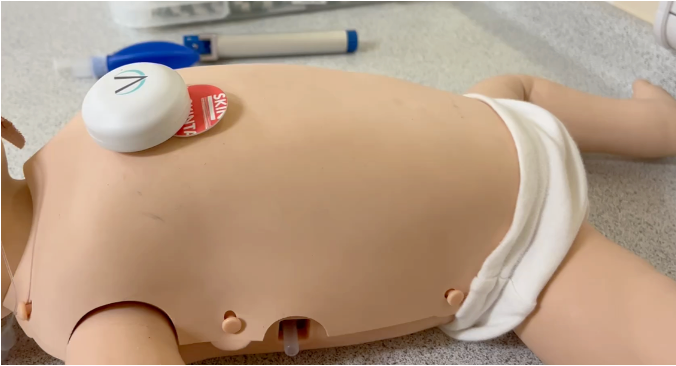The other side of the bridge
- 28 June 2013

Wales faces all of the health challenges that are facing larger countries; and some particular challenges linked to its industrial legacy and rapidly ageing population.
In response, it has made some decisive splits from health policy in England. There is no purchaser/provider split and no competition between Wales’ seven health boards. Instead, they are expected to cooperate and collaborate.
In other ways, its vision of the future is very similar. Welsh policy makers want a joined-up service in which any clinician involved in a patient’s treatment can see relevant information about them at the point of care. And they see the implementation of good IT as essential to retaining a quality service for the public.
Taking a national approach
David Davies, NHS Wales Informatics Service director of engagement, has a background in hospital management.
He argues that in order to design and implement good technology, NWIS needs a good understanding of the NHS as an organisation: its culture and the pressures it works under.
After that, it’s central, driving idea is to “just do it once for Wales”: to start with technologies and projects that everybody has confidence in, and to then look for what it makes sense to do next.
Some long-running projects include the creation of the Welsh Clinical Portal, which gives clinicians in hospitals anywhere in the country a consistent view of patient information, pulled from various IT systems. GPs will soon be able to use the portal to order routine investigations, such as blood tests.
Another longstanding project is the Welsh Clinical Information Gateway, which sends e-referrals from GPs to hospital. More than half of all referrals are now sent using the gateway, and NWIS is working on electronic templates for referrals into a small number of specialities.
More recently, boards have started sending electronic discharge summaries to practices via the gateway, which are then inserted directly into the GP workflow via PCTI’s Docman.
NWIS is starting pilot work on sending e-referrals from hospitals to the community sector. And it has kicked off a national framework procurement for an integrated health and social care system and a national electronic document management system.
Getting with the primary care programme
Andrew MacBean, NWIS director for operational services, is responsible for the primary care programme, which has been redeveloped so that every GP in the country gets the same service.
He describes the primary care strategy’s four strands of work as: migrating all practices to a new national framework contract; bringing the hosting of GP systems in-house; improving network connectivity; and a programme to refresh GP IT. These sit within a £40m budget assigned for primary care IT.
A new national framework contract was agreed in July last year, with Emis and INPS named as the successful suppliers to provide clinical systems to Wales’ 473 practices.
GPs can choose which supplier to go withand the split so far is almost even, with 257 practices choosing to take INPS’ Vision 360 and 210 to take Emis Web.
Twenty-two sites have been migrated to the hosted version of Vision 360 and the first Emis Web practice went live last week. Roll-out will start in earnest from September, with an aggressive plan to reach 25 sites per month.
MacBean explains that the decision to move to a centrally hosted service was based on data from calls to supplier helpdesks over a number of years.
These showed the majority of calls were about connectivity issues or requests for hardware support, which were not the specialty of suppliers.
The new, standardised system means every practice PC will be set up in the same way as the one sitting next to it, and that helpdesk staff will be able to access them remotely.
MacBean argues that the hosted service will reduce the burden on GPs who otherwise have to try and manage and maintain IT systems in their practices, make sure that all GPs get the same level of service nationwide, and improve the security of patient data, for example by consistently applying security updates.
Eighty sites are now on the hosted service and the number of calls and queries about IT has “dropped off the cliff,” he says. On the other hand, he acknowledges that the new setup makes the network “all important.”
A programme is well underway to bring all GPs up to 10MB of bandwidth, with around 300 practices already upgraded. NWIS is also spending about £4m a year on keeping GP IT kit up to standard.
Sharing and caring
Davies tells EHI that when NHS staff were consulted about which key, technological developments would help them do their jobs, the most popular response was out-of-hours access to a summary of the GP record. Soon after, the Individual Health Record was born.
Similar to the Summary Care Record in England, but less controversial, the IHR involves a summary real-time view pulled from the GP system, including medical problems, recorded allergies, and the results of any recent tests or x-rays. Three quarters of the Welsh population have a GP with IHR-use enabled.
Already embedded in OOH, the next step is give access to the IHR to hospital A&E staff, via the clinical portal. Davies says there is a clamour for this technology and hopes a pilot will start within the next few months.
The final piece of the jigsaw is My Health Online, which allows patients to go online and transact with the NHS, for example by booking appointments. Just over half of all practices now have access to My Health Online and about 18,000 people are using it.
In England, health secretary Jeremy Hunt has set a target for all patients that want it to have access to their GP record online by March 2015.
The technology behind My Health Online also allows patients to view their records, but this is not yet being pursued in Wales. Davies says that a patient engagement exercise showed that patients wanted transactional services first.
Similar surveys have generated the same response in England, but political deadlines have been set nonetheless.
Wales’ bottom-up approach is refreshing. However, Davies argues it grows out of Wales’ small population and cohesive services, which mean that people can get together to discuss ideas, instead of having them imposed from above.
“We are a small country, we can’t afford to make big mistakes,” he adds.




